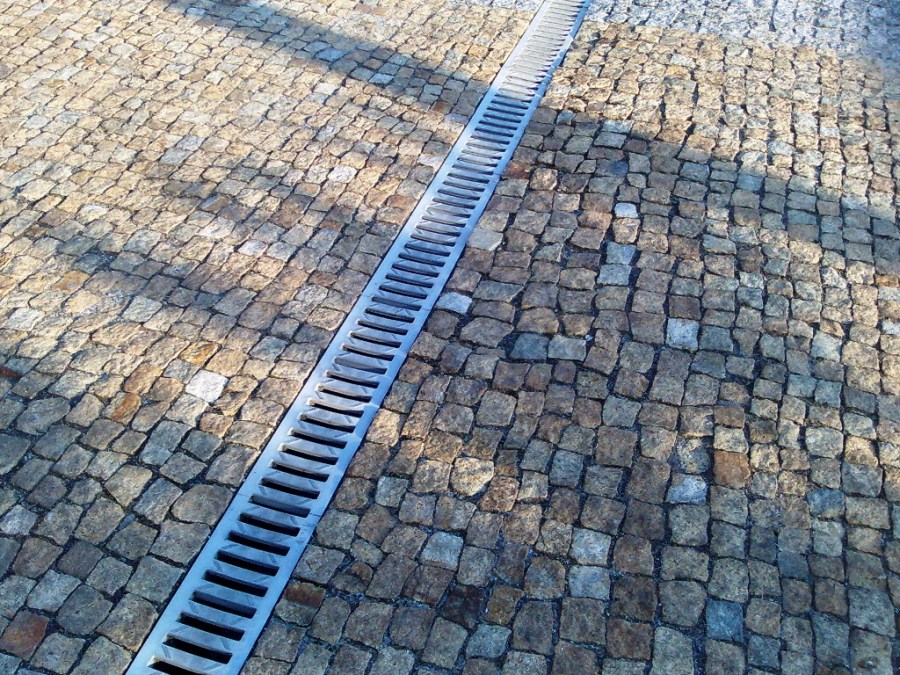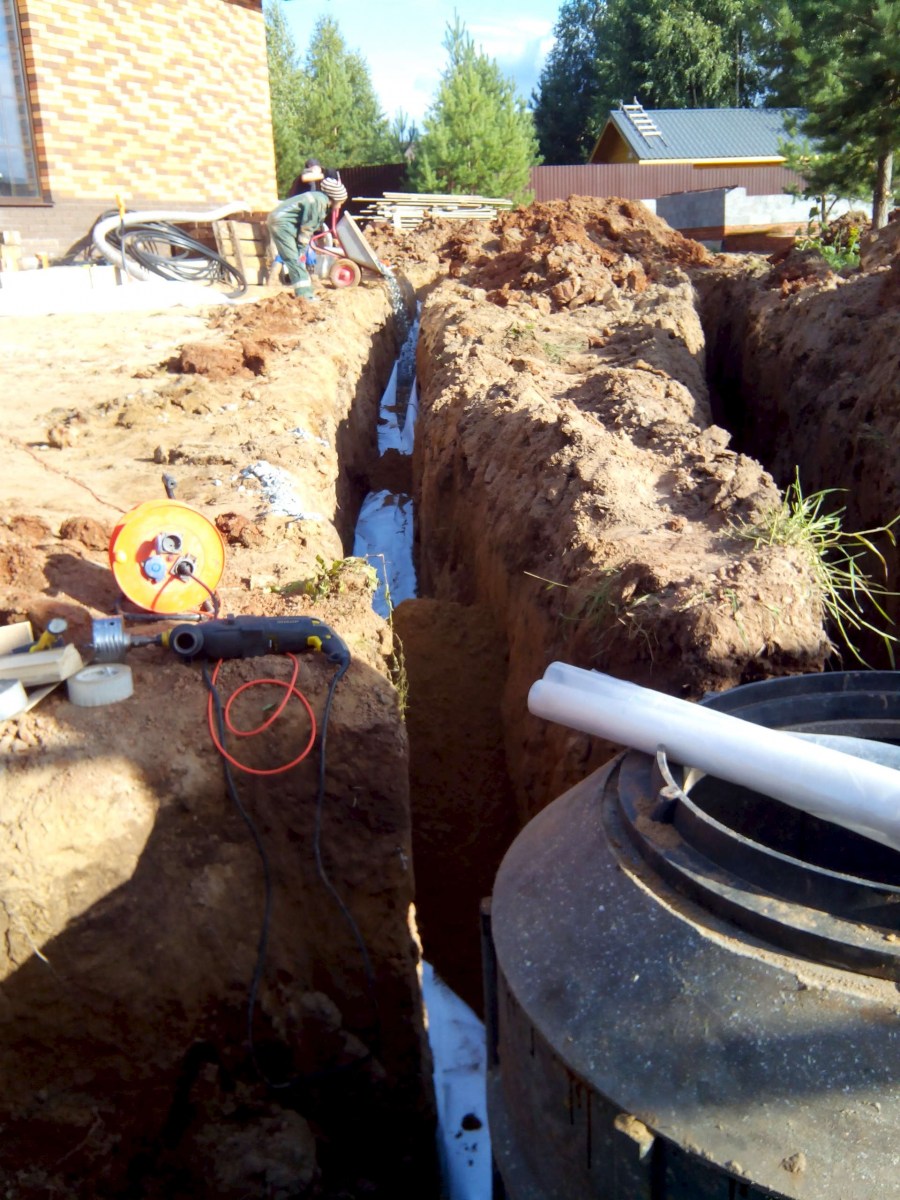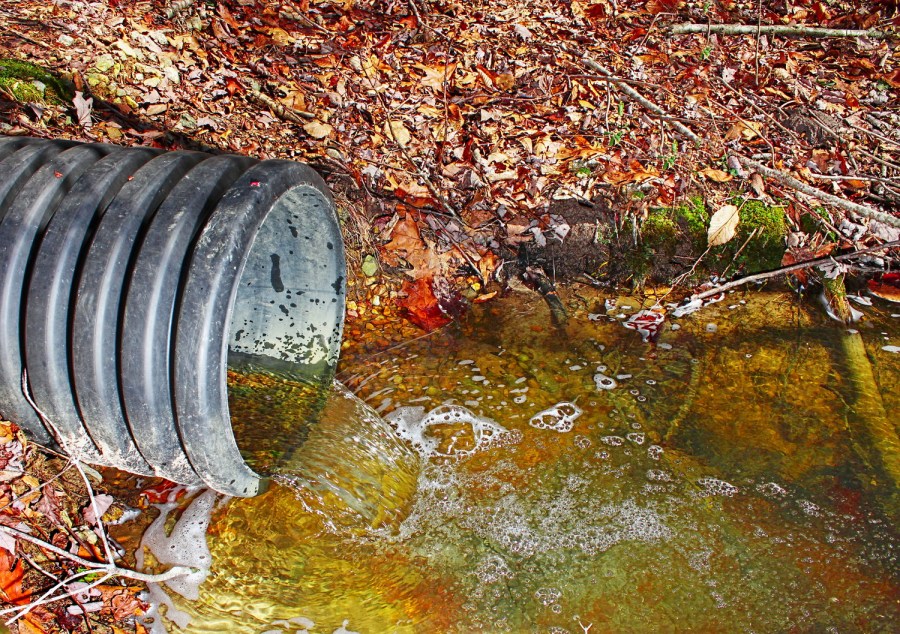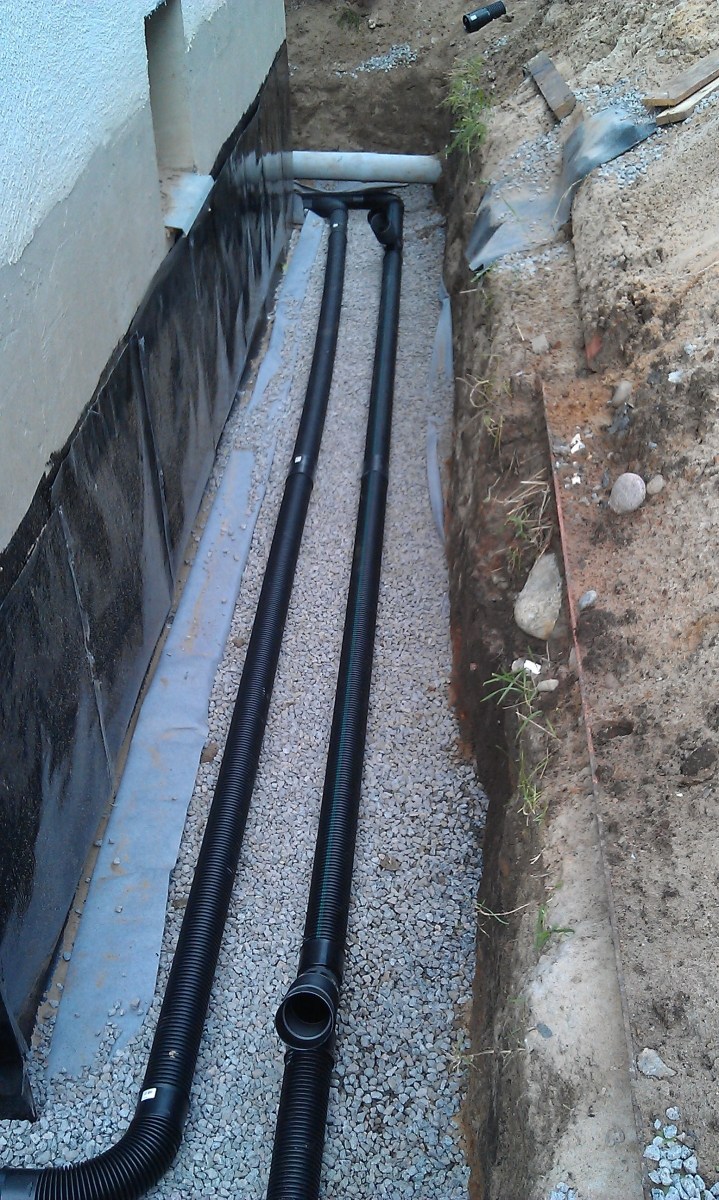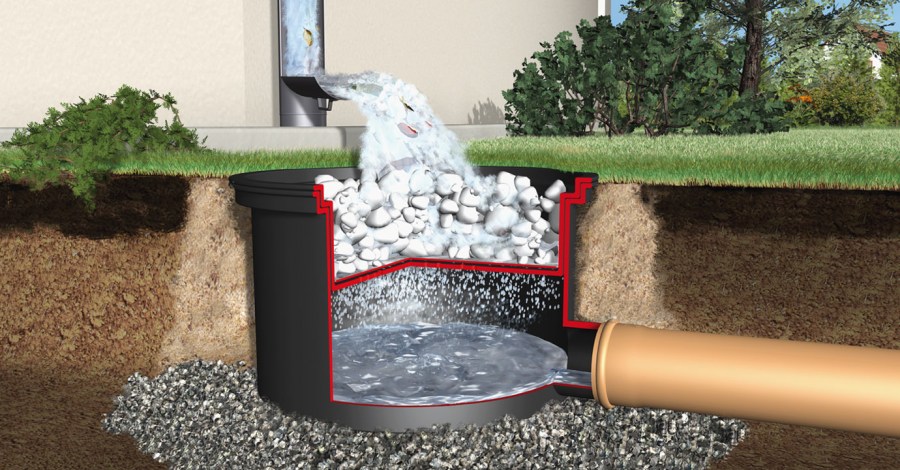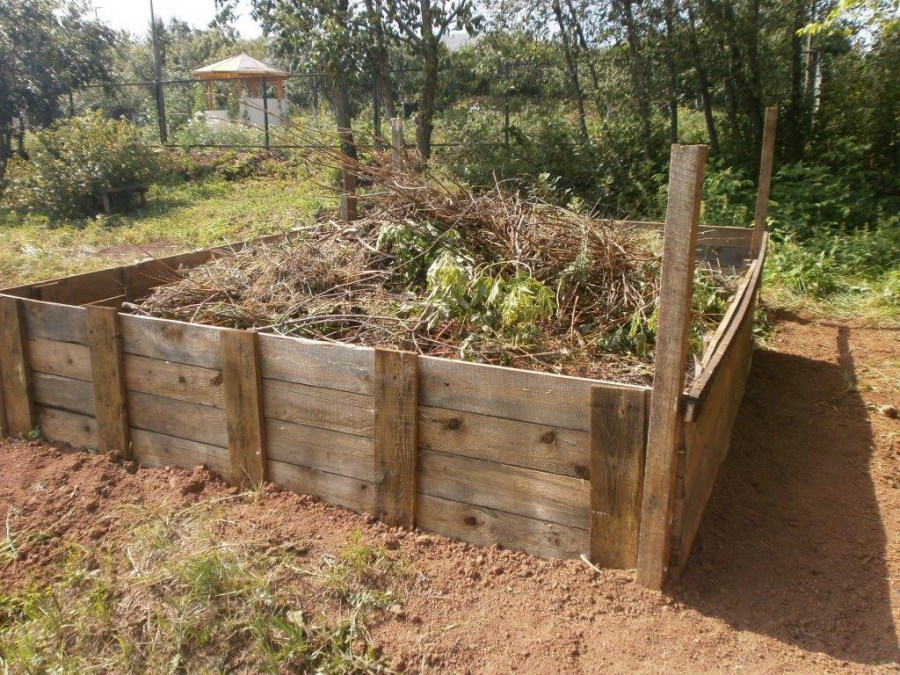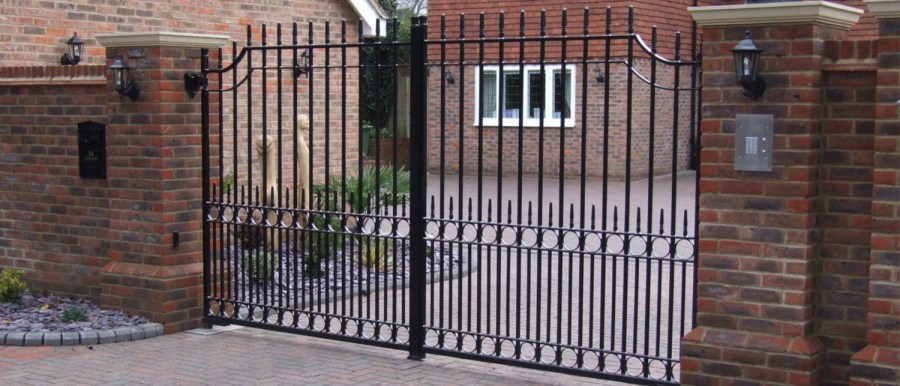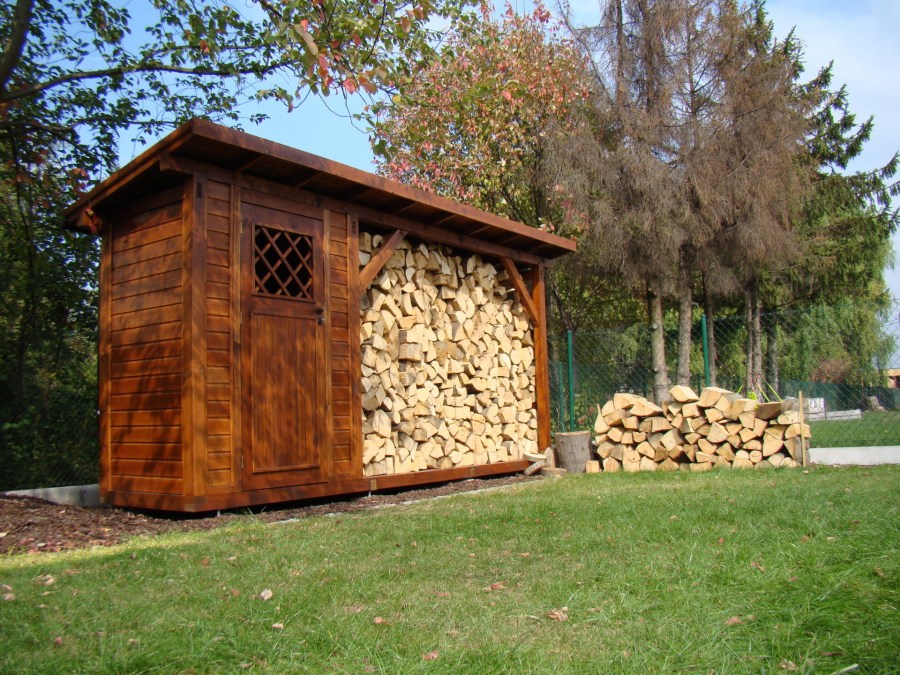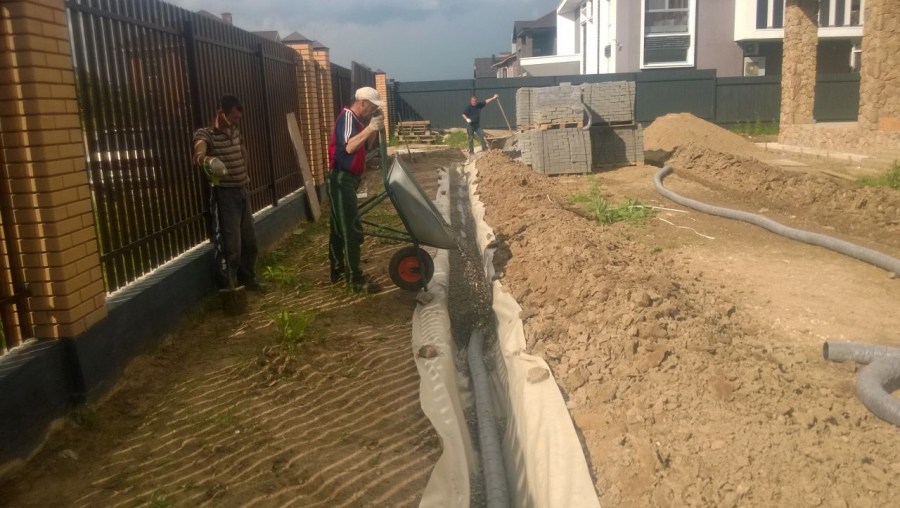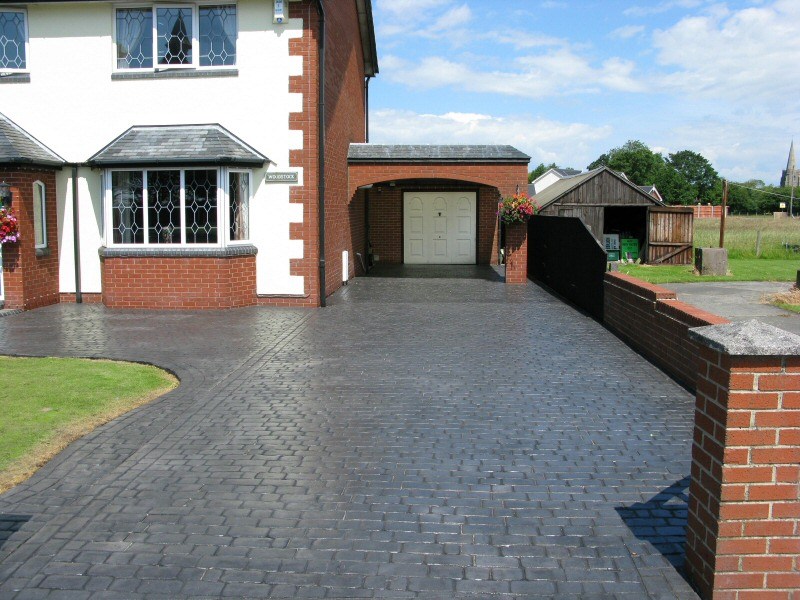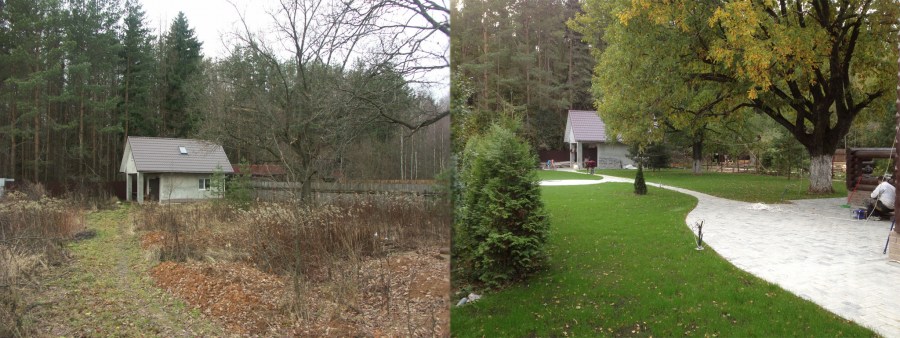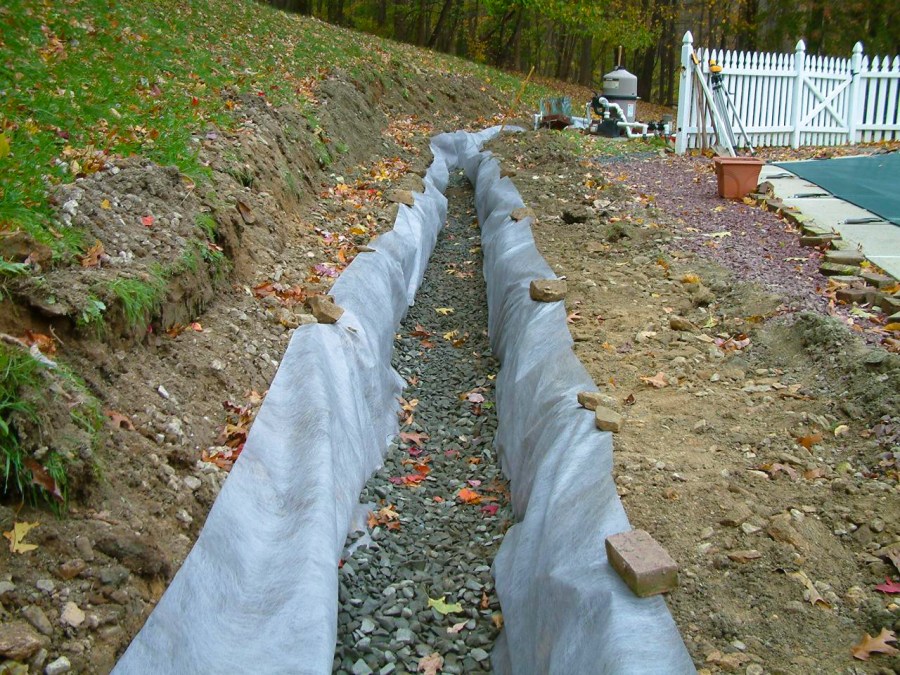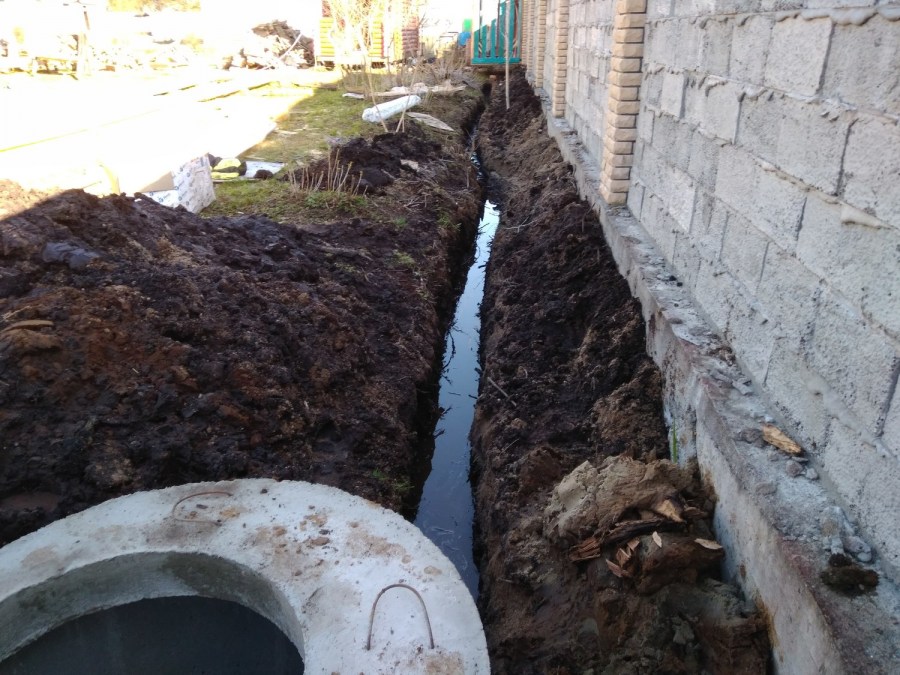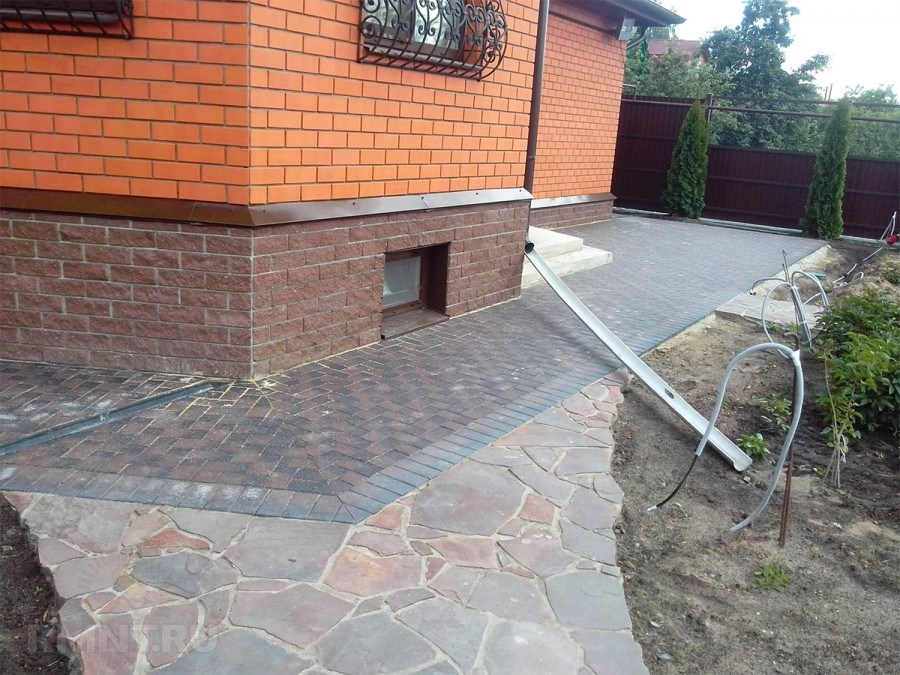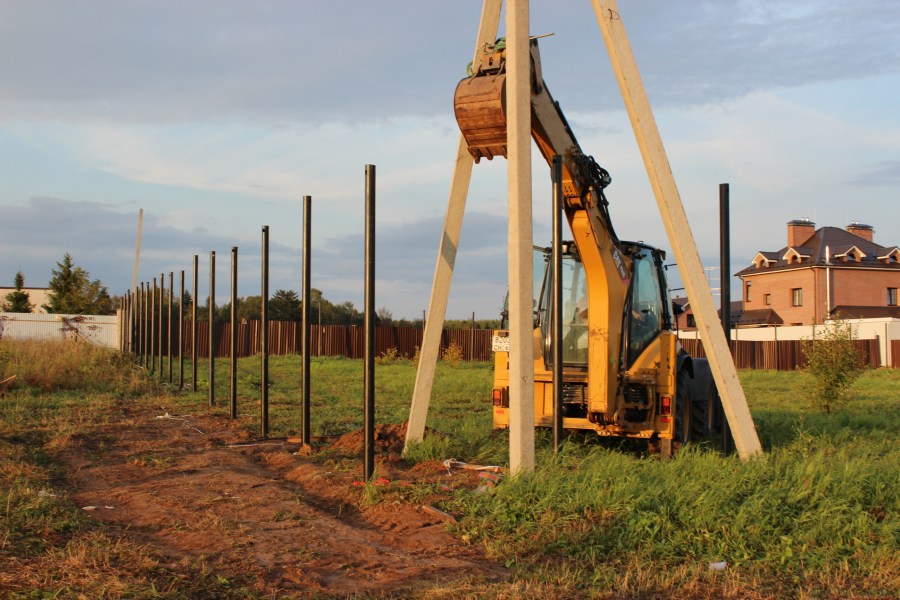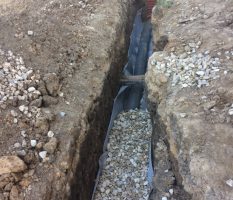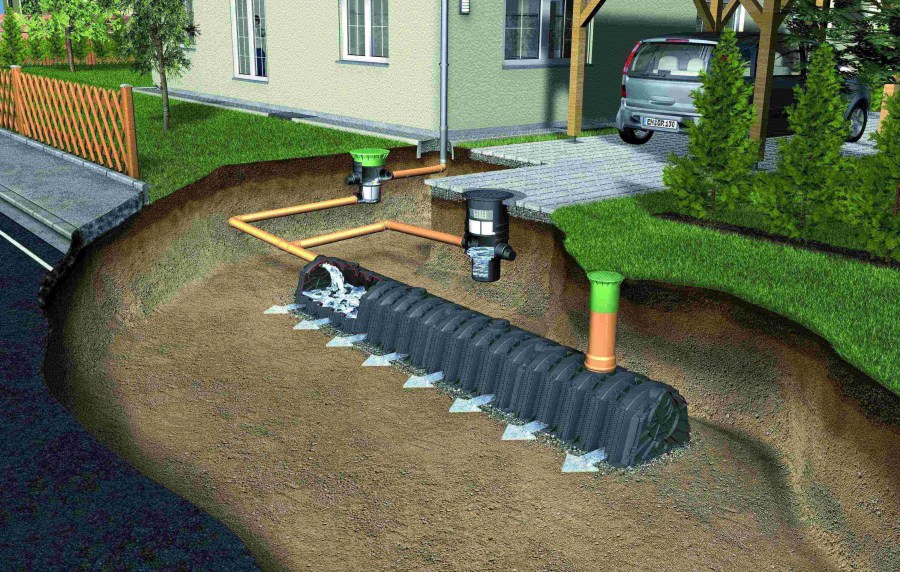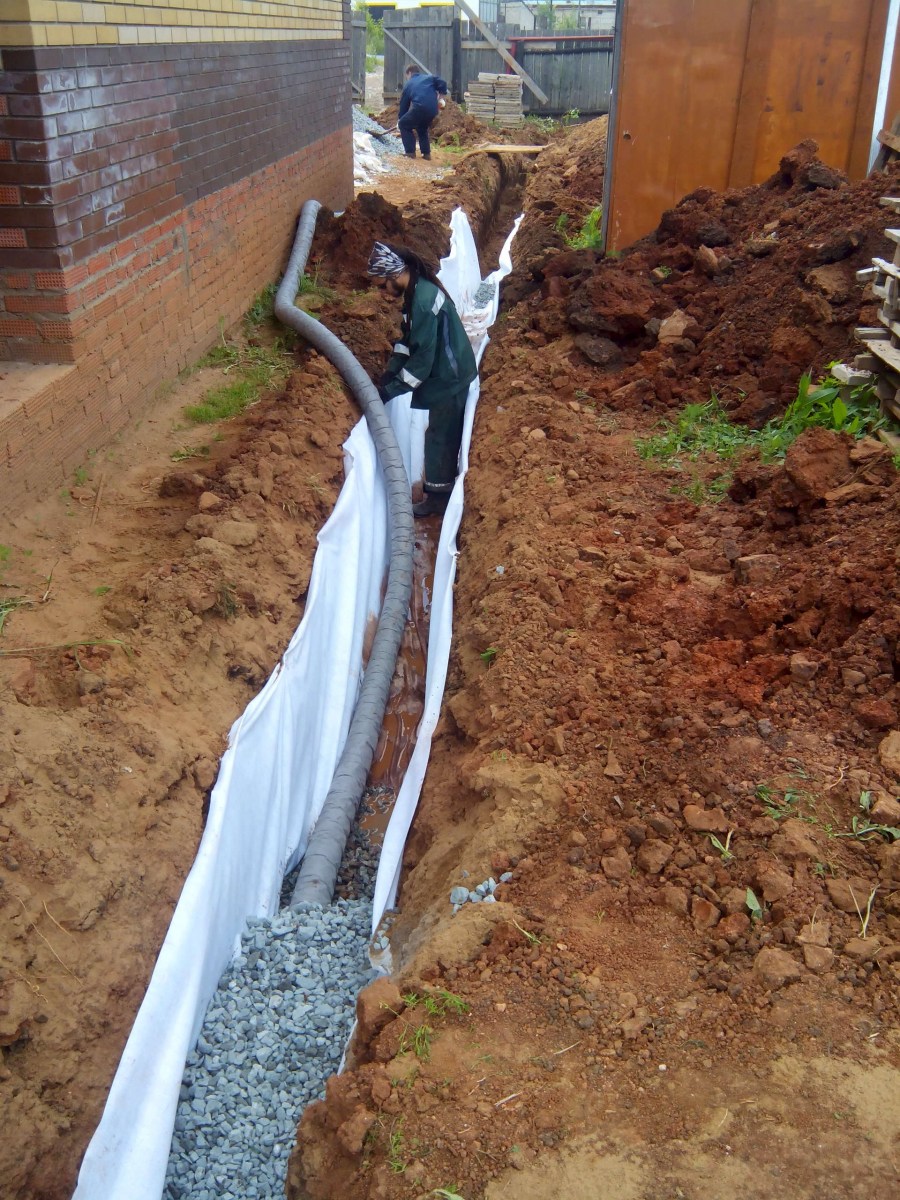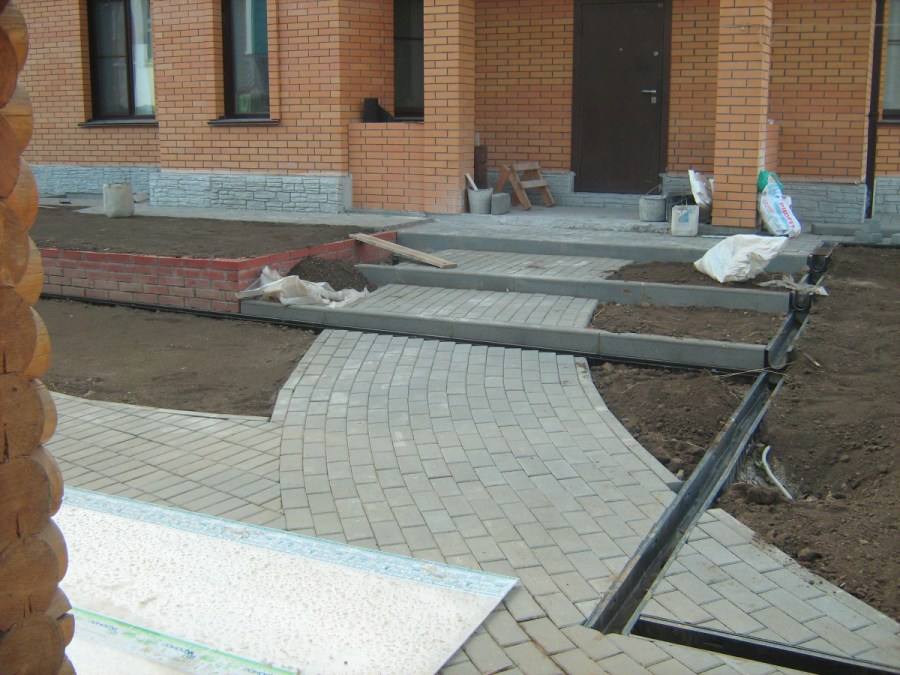Drainage on the site - instructions for arranging a do-it-yourself water drainage system (115 photos)
After you have purchased a plot for a country house, you should not immediately plan the laying of the foundation, the construction of the building and the arrangement of the garden. Similarly, do not rush to rejoice after buying a home. After all, there is an important point that many people miss - the creation and modernization of the drainage system.
These works are quite complex, require special skills. But you can cope with them yourself. Moreover, the services of specialists are very expensive. Let's discuss together how to correctly and efficiently implement using modern technology.
What is the purpose of the drainage infrastructure?
Drainage is a complex of utilities, thanks to which groundwater, as well as melt and rain moisture does not linger on the site, which reduces the risk of wetland. It will naturally move away from the foundations, which will prevent soil movement and squeezing of the building due to frost heaving.
Also, the drainage system will protect cellars and basements from dampness, exclude the possibility of squeezing the septic tank due to the action of groundwater, and limit the waterlogging of the soil, washing off the top layer and reducing its fertility.
The decision to create these communications should be made by the developer himself, taking into account his financial capabilities. But the presence of such a system will significantly increase the comfort of living. And in some cases, drainage is simply necessary:
- If your home is or will be built on level ground. In this case, the liquid will naturally stagnate.
- When the house will stand in the low part of the territory. Then moisture will drain from elevated places and accumulate.
- Situations along slopes are also affected by water flows. It will simply wash away the fertile cover of soil.
- In places with clay or loamy soils, the process of moisture absorption is difficult. After the snow melts, it will remain here for a long time.
- If the water of soil origin lies too high or the foundation is too deep.
What drainage systems exist
Types of drainage communications can be very diverse. They depend on the characteristics of the territory - relief, type of soil, climate, and the financial capabilities of the owner of the house.
Surface drainage
This is a simple drainage site. It is suitable for you when you plan to divert water generated after rain or snow melting, and also appearing after cleaning the machine and similar technological processes. Corresponding communications are arranged around buildings and structures.
Point, or local, drainage allows you to drain water from any specific sites. It is installed, for example, under roof gutters, in the installation area of taps for irrigation or washing the machine.
The linear design is focused on the removal of moisture from large areas of the house territory. In this case, a variety of trays and channels are used, supplemented by sand traps, protective grilles, etc.
Deep construction
A more effective way to drain the site and protect it from the accumulation of excess moisture is to install a complex of outlet pipes. They are laid with a slope towards the well or collector.
Installation of pipes can be carried out at a depth of up to 1.5 m, i.e. will be below the bottom of the foundation. So you can ensure high-quality drainage of groundwater.Therefore, they are laid not only around the perimeter of buildings, but also in the middle of the plot with a herringbone towards the well with a step of 10-20 m.
If the house is located on a slope, then it is easier to equip such a system in comparison with a situation when the building is located on flat ground. In this case, it is necessary to vary the depth of the trenches, creating a slope of 10-30 mm per 1 m of pipe.
But for long drains, a large difference in heights occurs, which significantly violates the design. In this case, it is recommended to use several wells:
- Swivel - installed at the junction of pipes and serve to clean the entire system.
- Water intake - used to collect moisture, followed by forced pumping.
- Absorption - with a depth of more than 2 m with the possibility of removing excess water through the bottom into sandy or sandy loamy soil. At the bottom of such a well a filter layer is created from sand, gravel, gravel.
In the photo of the drainage system, which is being equipped in summer cottages, you can see the specifics and differences of the proposed two technologies.
Surface drainage
Despite the fact that this option does not require complex engineering calculations, the drainage scheme for the site should still be. This option is universal when draining small areas. It is recommended to prepare the track constructed by the herringbone. The distance between drains depends on the characteristics of the soil. For example, it is less for clay soils, and more for sandy soils.
In the process, a groove up to 350 mm deep is dug. If communications are placed in sandy soil, then the width of the trench will be the same. For clay soils and loams, a wider base is required - up to 450 mm. It is necessary to equip one central water conduit, where all the side pipes should be directed.
The water intake should be installed at the bottom of the site. The dimensions of the pit under the well are determined by the size of the tank. If you plan to install on sandy soil, then the option with a filter well is suitable.
In order for the drainage of water from the site to be most effective, the slope must be strictly observed. For testing, a good pressure of water is passed through the trench. If it passes quickly and without delays in the connecting blocks of drains, then the structure is constructed correctly. For delays, it is necessary to adjust the grooves on the slope.
The ditch or their system must be covered with a film or tarp. Used geotextiles, for example, should cover not only the bottom, but also go on the slopes. The insulation material must be securely fixed with nails, and reinforced with spacers on the walls.
The bottom of the trench should be covered with a layer of wood chips of 100 mm, and then with fine gravel, crushed stone or previously removed soil. The groove can be concreted, but this method is more time-consuming and costly. Installing drain pipes and stormwater will improve the quality of the entire drainage system.
Deep drainage construction
If you want to learn how to make drainage on a site that protects your country house from flooding as much as possible, then you need to study in detail the technology for arranging a deep structure. It is especially needed in areas with high groundwater levels. The technology under consideration will help to perfectly drain the earth, while maintaining the external presentability of the landscape.
At the initial stage, a plan is created with the drawing of pipe placement lines. The direction of the branch is from the slope. The depth of the laying of pipes is determined by the type of soil - for the sand type, the trench is dug by 1 m, and for dense soil, 0.5 m is enough.
Consider the ambient temperature in winter. Indeed, in prolonged frosty weather there is a risk of a pipe rupture with residual water, and soil movements can easily crush them.
Drainage of a site with a high groundwater level will become more reliable and durable if perforated plastic pipes are used. Additionally, they should be covered with textiles for better insulation.
The width of the trenches is more than 300 mm. All pipes are combined into a common system that provides moisture discharge to a single point. It is necessary to provide a slope of 20-40 mm per 1 m of pipe.
At the lower point of the territory, a receiving well is arranged. If the arrangement area is small, then storage and filtering types of receivers are applicable. Vast territories with clay soils and loams are equipped with storage wells up to 1000 liters in volume.
The bottom of the trenches is covered with fine gravel, and geofabric is laid on top of it. It is important to ensure that the material is overlapped on the slopes and secured with pegs. Top should be covered with gravel average in the fraction. And only then should the pipe be installed. Its diameter should be at least 110 mm.
Where the drain turns, you should put manholes, the sizes of which depend on the projected volume of moving water. The pipe joins the mounting hole using a coupling with pre-treatment with sealant.
This technology is also used when attaching the drain to the well pipe. Only in this way will you be able to make good drainage in the suburban area. Do not forget to test the system!
Lay on the laid pipe in layers:
- fine gravel;
- geotextiles;
- quarry sand;
- priming.
Excessive accumulation of water in the soil in the country can spoil all the impressions of the rest. Therefore, house owners should be extremely careful about installing a drainage system that allows timely and fully divert sedimentary and groundwater.
To do this is not too easy, but necessary. So you protect the foundation of the house and the fertile soil in the garden.
Photo of drainage on the site
Loft-style house - 120 photos of a modern and cozy design
Wicket for giving: 95 photos of modern manufacturing technologies
Join the discussion:
